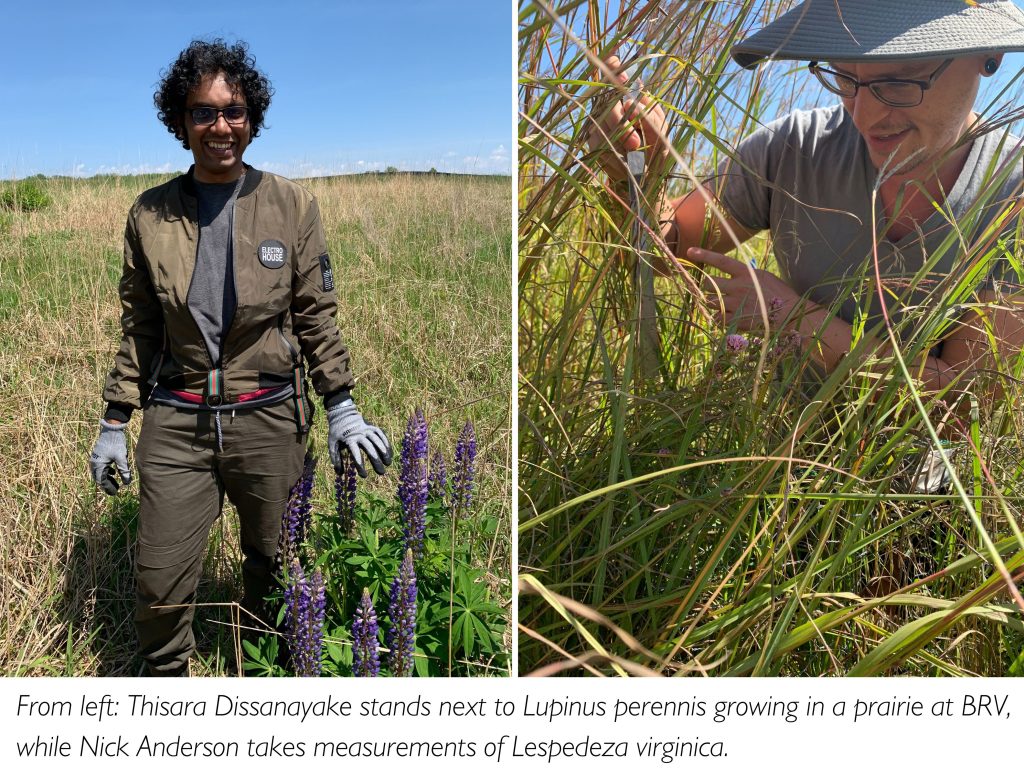Restoring prairies can be challenging due to low plant and microbial diversity. To better understand what types of soil microbes may enhance prairie restoration efforts, a group of researchers from Eastern Michigan University (EMU) and Miami University have been studying plant communities at Big Rock Valley, the Edward Lowe Foundation’s 2,000-acre headquarters in southwest Michigan.
Led by Emily Grman, Paul Price and Jonathan Bauer and funded by a National Science Foundation grant, the researchers are investigating two specific types of microbes:
- Rhizobia, which are bacteria that transform nitrogen gas from the atmosphere into ammonia and other plant fertilizers.
- Arbuscular mycorrhizal fungi (AMF), which also benefit plant development by taking up such nutrients as phosphorus, water and minerals.

The majority of the study at Big Rock Valley focuses on how these microbes impact the health and growth rates of leadplant (Amorpha canescens) and bushclover (Lespedeza virginica). To get the ball rolling, the researchers first inoculated legume seedlings with rhizobia, AMF, both rhizobia and AMF or neither in early 2022. The researchers then planted the seedlings in 20 different prairie sites at Big Rock Valley in spring 2022. Since then, they have been monitoring plant health throughout the growing seasons and measuring height and aboveground plant biomass at the end of each season.
“One of the great things about working at Big Rock Valley is the huge variation in soils within a relatively small geographic area,” says Grman, a professor of biology at EMU. “This was important as we wanted to see how the inoculated seedlings might respond to different soil characteristics.”
Among their hypotheses, the researchers predict each microbe will individually boost plant growth and there might also be a synergistic effect (extra payoff), by introducing both mutualistic microbes to seedlings. “This would make sense because the rhizobia and AMF are providing complementary resources and exchanging different nutrients with plant roots,” Grman says.
Although the study continues through the 2025 growing season, results from early data have shown that:
- For leadplant, individual inoculations of rhizobia and AMF did not often improve survival or plant height. However, when the microbes were used in tandem, there was a dramatic increase in the height of plants, indicating a synergistic effect. This effect was consistent across most of the 20 prairies.
- Bushclover also demonstrates a synergistic effect on height when receiving the rhizobia-AMF cocktail. Yet effects of individual mutualists and the combined cocktails were wildly variable across different prairies.
- For bushclover growing in sites with high phosphorus in the soil, AMF microbes were more beneficial, but the combined cocktail was less beneficial compared to bushclover growing in sites with less soil phosphorus — opposite of what researchers expected. Rhizobia were less beneficial for bushclover growing in prairies with more plant material aboveground, consistent with the researchers’ expectations.
“So, the take-home message is, as always, that more research is necessary,” says Grman. “Plants get taller for both species with the mutualist microbes, but there are variations. For Amorpha (leadplant), it appears to be beneficial to inoculate most of the time. Yet for Lespedeza (bushclover), the data are noisy and not so predictable.”
The researchers will continue to monitor the plants at Big Rock Valley during the 2025 growing season and then analyze the full four years of data.
(Students working at Big Rock Valley included: Nick Anderson, Alex Chumney, Thisara Dissanayake, Emily Galloway, Grace Halcrow, Simon Outlaw, Kaz Reszetar, Dan Ruffing, Emily Schroeder, Lucas Guido, Gijon Van Linden and Caleb Willette. Other students working in the lab on samples and data analysis included: Brooke Burns, Amberlin Booth, Carol Day and Renee Dollard.)